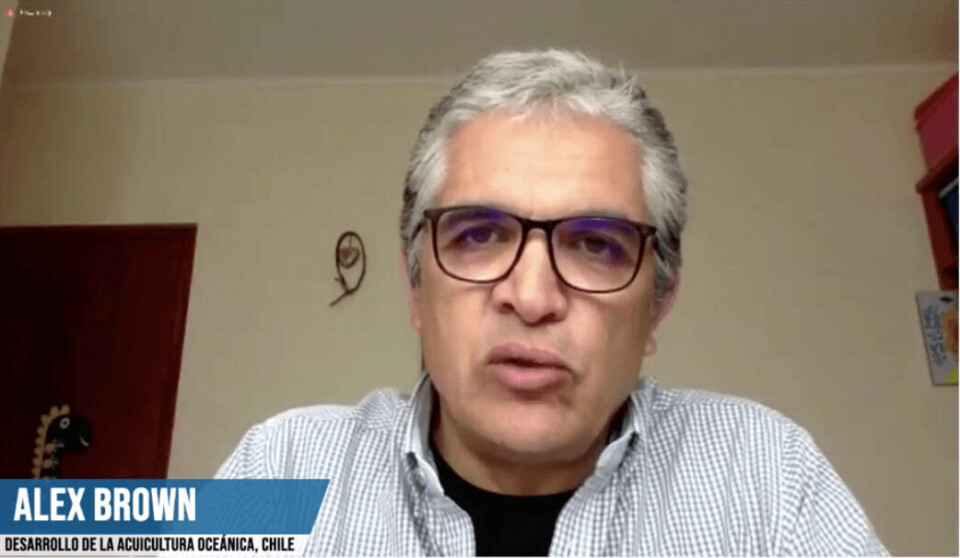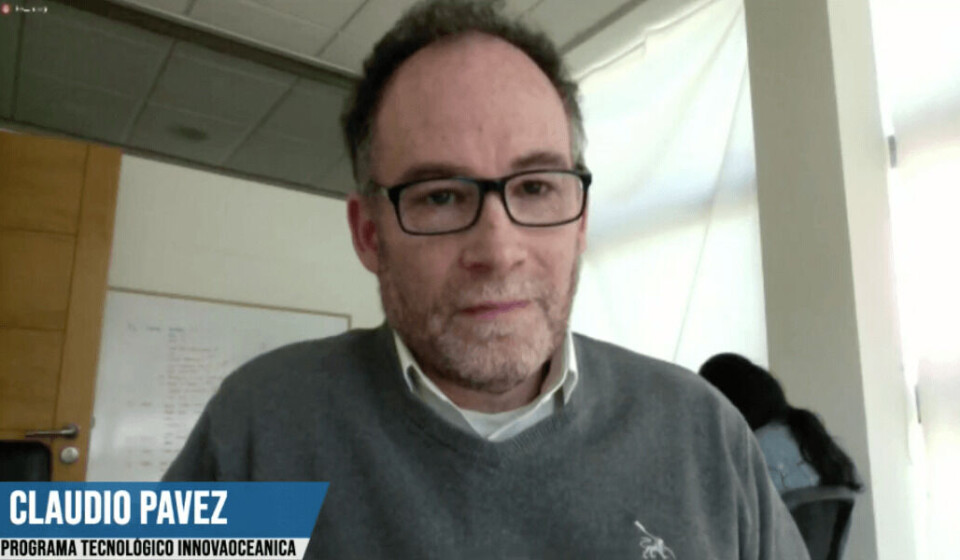
Fish doing well in Chilean submersible cage, says project chief
Salmon being grown in a prototype submersible cage in Chile are performing better than in a normal cage nearby, the director of the initiative has said.
Alex Brown, from Ecosea Farming, gave an update on the project on the first day of a three-day international virtual workshop, Development of New Technologies for Aquaculture in High Energy Areas.
The cage was stocked with 50,000 fish with an average weight of 115 grams in August last year. Productive indicators so far show an accumulated mortality of 3.5%, economic feed conversion ratio (eFCR) of 1.12, a biological feed conversion ratio (bFCR) of 1.09 and a specific growth rate of 1.0 in daylight.

Close to harvest
Brown, the research and development manager for Ecosea, said these indicators were better than those of fish in standard cages on the same site. Although the submersible cage is designed for high energy sites, it is at this stage being tested at a conventional inshore site run by salmon farmer Invermar.
Brown added that the submersible cage is close to being harvested with an estimated biomass of 200 tonnes of Atlantic salmon.
‘Fewer conflicts’
The Ecosea director also listed progress in a number of other areas related to high energy sites, including a site selection model by Fraunhofer Chile that has already been used to propose suitable areas for ocean aquaculture from the Araucanía region to Los Lagos.
Despite this advance, Brown stressed that regulatory challenges remain for ocean aquaculture development.
“We are working on the importance of the Fisheries and Aquaculture Law recognising ocean aquaculture in some way, where sectors could be occupied beyond the first mile (from the coast), for example, from mile 5 to 12 (territorial sea) or until 200 (exclusive economic zone), because we will have the technologies to produce in those areas and where there will be fewer conflicts with other users. We see that it could be beneficial for future production.”

Performance parameters
Ecosea’s project is one of two being backed by state development agency, Corfo. The other is being carried out by InnovaOceánica, which has built two prototype semi-rigid cages.
Elements of the cages have been developed to “address energy levels that until now in the industry had not been proven”, said company director Claudio Pavez.
“Both cages were installed in a concession in the Corcovado Gulf, which had not been used due to its high energy, where we established parameters of comparison and performance of the infrastructure operation in a first stage,” added Pavez.
Continuing development
“The height of the waves, the currents and environmental conditions of high stress for the infrastructure allowed us to evaluate the performance of the structural solutions and also operational aspects.”
The cages are no longer in operation and researchers are currently analysing the results and building elements for improvement.
“Probably, from this process, we are going to talk about the superstructures, the articulation elements, the performance. We see the execution of this test and the information that we are obtaining as a great opportunity to continue with this development process,” concluded Pavez.























































